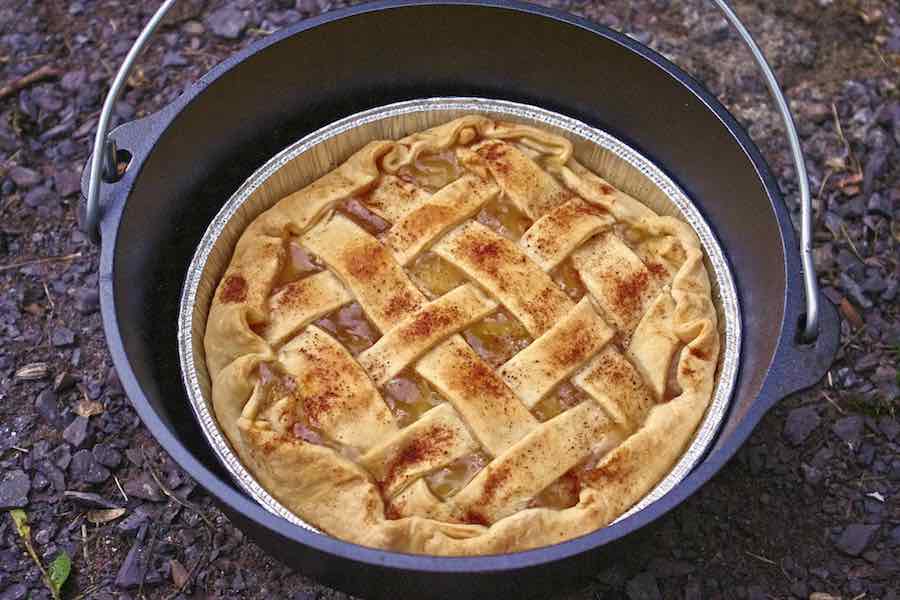Seasoning An Oven


Dutch Oven | Mike Goad - Pixabay
Untreated cast iron rusts, especially around water. To prevent metal from oxidising in the presence of moisture, cast iron requires a process called seasoning. Seasoning is simply the procedure of baking oil into the oven’s pores, and on top of the iron pores. This baked on coating will darken and eventually turn black with age. Darkening is the sign of a well kept oven, and of it’s use. This coating forms a barrier between moisture in the air and the surface of the metal. It also provides a non-stick coating on the inside of the oven that is easy to clean.
Here are some tips when it comes time to season your Dutch oven.
Scrub lid and dutch oven in hot water with a mild soap to take off the coating the manufacture puts on the oven before shipping. Use a stiff brush, 3M scrub pad, or plastic scrubbing pad to scrub the waxy coating off of your new Dutch oven, and rinse in clear, hot water. Dry your oven by putting it in the kitchen oven at 150 to 200 degrees for 15 or 20 minutes.
While it is warm, coat the inner and outer surfaces with a thin layer of cooking oil. Use a good grade of olive or vegetable oil. Peanut oil is a choice of many, and tallow or lard can also be used, but they tend to break down over time and become rancid if the oven is not used often enough.
Place the oven and lid in a conventional oven, or a gas BBQ grill, with the pot upside down and the lid on the Dutch oven legs. Heat oven at 450 to 500 degrees and bake for 30 to 40 minutes until the oil turns very dark, nearly black. This process bakes a grease coating into the pot and virtually gives it a no scrub surface.
Remove the oven and apply another light coat of oil, and. bake at 450 to 500 degrees for another 30 minutes. By using high temperatures, the oil will bake harder and darker, leaving your oven shinier. You should oil and bake at least once, I like to go through this process two, or even three times to get a beautiful dark color, and rock hard finish.
Turn off the heat and let the Dutch oven sit until cool. If the surface is sticky, bake an additional 30 to 40 minutes. When seasoning your oven it will create a smell that may be unpleasant. For this reason some like to season their ovens in a BBQ outside, however I have done all mine indoors with the doors and windows open.
The first thing you cook in your oven after seasoning should be things like roasts, potatoes or chicken. Stay away from tomatoes and tomato products with high acid content, or a lot of sugar such as cobblers. Acids and sugars can break down the protective covering before it seasons or hardens properly.
A well seasoned dutch oven produces a unique flavour unequaled by any other cooking utensil. This is the Magic of Dutch Oven cooking.
Read 1891 times!
Recent Posts
Benefits of Avocado
Avocado are revered for their buttery taste and teture, a quality that stems from the…
Benefit of Blueberry
Blueberries boast and antioxidant triple threat. Anthocyanins give the berries their vivid blue hue and…
Tips for Storing Cupcakes
Most of the cupcakes should be stored at room temperature. If there are exceptions, it…
Peeling and Pureeing Peaches
Before pureeing peaches, remove their skins by blanching. Blanching is a two-step process in which…
What Chopper can Do for You
Preparation work can be time-consuming. The good thing there are gadgets like this nifty little…
What to Look For When Buying a New Oven?
With the range of choices, not to mention the variety of features and designs available…

